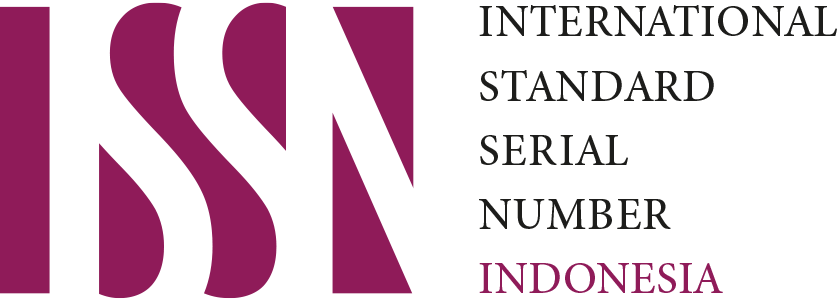A Comparative Study on the Effectiveness of Using Direct and Audiovisual Methods for Enhancing Students Listening Comprehension
Abstract
The present study aims to compare experimentally direct and audio-visual method in terms of their effectiveness in students listening comprehension. Another purpose of the study is to help the teachers to find out the most effective way of teaching listening in the classroom. This study was conducted in MTS Al-Hamid, and 46 students of two classes were selected as the sample participants. In choosing the sample, the writer used a cluster random sampling technique. The subjects were assigned as experimental and control groups. This research used post-test only toward the experimental and control group. Data were gathered through the listening test in both the control and experimental group. While the experimental group learned English by implementing the audiovisual method, the control group was instructed by the audiovisual method. In the end, the results were statistically analyzed. Based on the result, the use of audio-visual method had a positive effect on the enhancement of students listening comprehension.
Keywords
Full Text:
PDFReferences
Alhomaidan, A. M. A. (2018). A Contrastive Study of the Direct Method and Audio-Lingual Method in Teaching English Speaking Skills. 6(2), 351–360.
Arikunto, S. (2010). Prosedur Penelitian Suatu Pendekatan Praktik. Jakarta: Rineka Cipta.
Ashaver, D., & Igyuve, S. M. (2013). The Use of Audio-Visual Materials in the Teaching and Learning Processes in Colleges of Education in Benue State-Nigeria. IOSR Journal of Research & Method in Education (IOSR-JRME), 1(6), 44–55. Retrieved from www.iosrjournals.orgwww.iosrjournals.org
Brown, H. D. (2010). Language Assessment: Principles and Classroom Practices. New York: Pearson Education.
Buck, G. (2001). Assessing Listening. New York: Cambridge University Press.
Çakir, İ. (2006). The Use of Video as an Audio-Visual Material in Foreign Language Teaching Classroom. The Turkish Online Journal of Educational Technology-TOJET, 5(4), 67–72. Retrieved from http://www.tojet.net/articles/v5i4/549.pdf
Chemers, M. M., Hu, L., & Garcia, B. F. (2001). Academic Self-efficacy and First Year College Student Performance and Adjustment. Journal of Educational Psychology, 93(1), 55–64. https://doi.org/10.1037/0022-0663.93.1.55
Deci, E. L., & Ryan, R. M. (1995). Human Autonomy: The Basis for True Self-Esteem. In M. H. Kernis (Ed.), Plenum Series in Social/Clinical Psychology. Efficacy, Agency, and Self-esteem (pp. 31–49). Retrieved from https://psycnet.apa.org/record/1995-97476-002
Dehaki, M. M. (2017). The Effect of Watching Videos on Listening Comprehension of Iranian Intermediate EFL Learners in Public Schools Mohsen. Journal of Applied Linguistics and Language Research, 4(6), 214–222. Retrieved from http://www.jallr.com/index.php/JALLR/article/download/678/pdf678
Field, J. (2004). An Insight into Listeners’ Problems: Too Much Bottom-up or Too Much Top-down? System, 32(3), 363–377. https://doi.org/10.1016/j.system.2004.05.002
Flowerdew, J., & Miller, L. (2005). Second Language Listening: Theory and Practice. New York: Cambridge University Press.
Gilakjani, A. P., Sabouri, N. B., Pourhosein, A., & Branch, L. (2016). Learners’ Listening Comprehension Difficulties in English Language Learning: A Literature Review. English Language Teaching, 9(6), 123–133. https://doi.org/10.5539/elt.v9n6p123
Golchi, M. M. (2012). Listening Anxiety and Its Relationship with Listening Strategy Use and Listening Comprehension among Iranian IELTS Learners. International Journal of English Linguistics, 2(4), 115–128. https://doi.org/doi:10.5539/ijel.v2n4p115
Hamouda, A. (2013). An Investigation of Listening Comprehension Problems Encountered by Saudi Students in the EL Listening Classroom. International Journal of Academic Research in Progressive Education and Development, 2(2), 113–155. Retrieved from http://hrmars.com/admin/pics/1882.pdf
Harmer, J. (2012). Essential Teacher Knowledge. Harlow: Pearson Longman.
Hinkel, E. (2006). Current Perspectives on Teaching the Four Skills. TESOL Quarterly, 40(1), 109. https://doi.org/10.2307/40264513
Hsueh-jui, & Liu. (2008). A Study of the Interrelationship between Listening Strategy Use, Listening Proficiency Levels, and Learning Style. ARECLS, 5, 84–104. Retrieved from https://research.ncl.ac.uk/media/sites/researchwebsites/arecls/liu_vol5.pdf
Mourphy, S. (2018). What is the audio visual method? - Quora. Retrieved from https://www.quora.com/What-is-the-audio-visual-method
Nadig, A. (2013). Listening Comprehension. In F. R. Volkmar (Ed.), Encyclopedia of Autism Spectrum Disorders (p. 1743). Springer.
Rost, M., & Candlin, C. N. (2014). Listening in Language Learning. New York: Taylor and Francis.
Rost, M., & Wilson, J. (2013). Active listening. New York: Routledge.
Rubin, R. B., & Roberts, C. V. (1987). A Comparative Examination and Analysis of Three Listening Tests. Communication Education, 36(2), 142–153. https://doi.org/10.1080/03634528709378655
Vandergrift, L. (2006). Second Language Listening: Listening Ability or Language Proficiency? The Modern Language Journal, 90(1), 6–18. https://doi.org/10.1111/j.1540-4781.2006.00381.x
Vandergrift, L., & Goh, C. C. M. (2012). Teaching and Learning Second Language Listening: Metacognition in Action. New York: Routledge.
Vandergrift, L., & Tafaghodtari, M. H. (2010). Teaching L2 Learners How to Listen Does Make a Difference: An Empirical Study. Language Learning, 60(2), 470–497. https://doi.org/10.1111/j.1467-9922.2009.00559.x
Yousofi, N., Davoodi, A., & Razmeh, S. (2015). A Comparative Study of Audio and Video Listening Practices in a Private Language Institute in Iran. International Journal of Educational Investigations, 2(3), 16–26. Retrieved from www.ijeionline.com
DOI: https://doi.org/10.24853/elif.2.1.9-16
Refbacks
- There are currently no refbacks.
Abstracting/Indexing |
 |  |  |  |  |
 |  |  |  |  |
 |  |  |  |  |
 |  | |||
English Language in Focus (ELIF) is published by This work is licensed under
|






9.png)
2.png)






